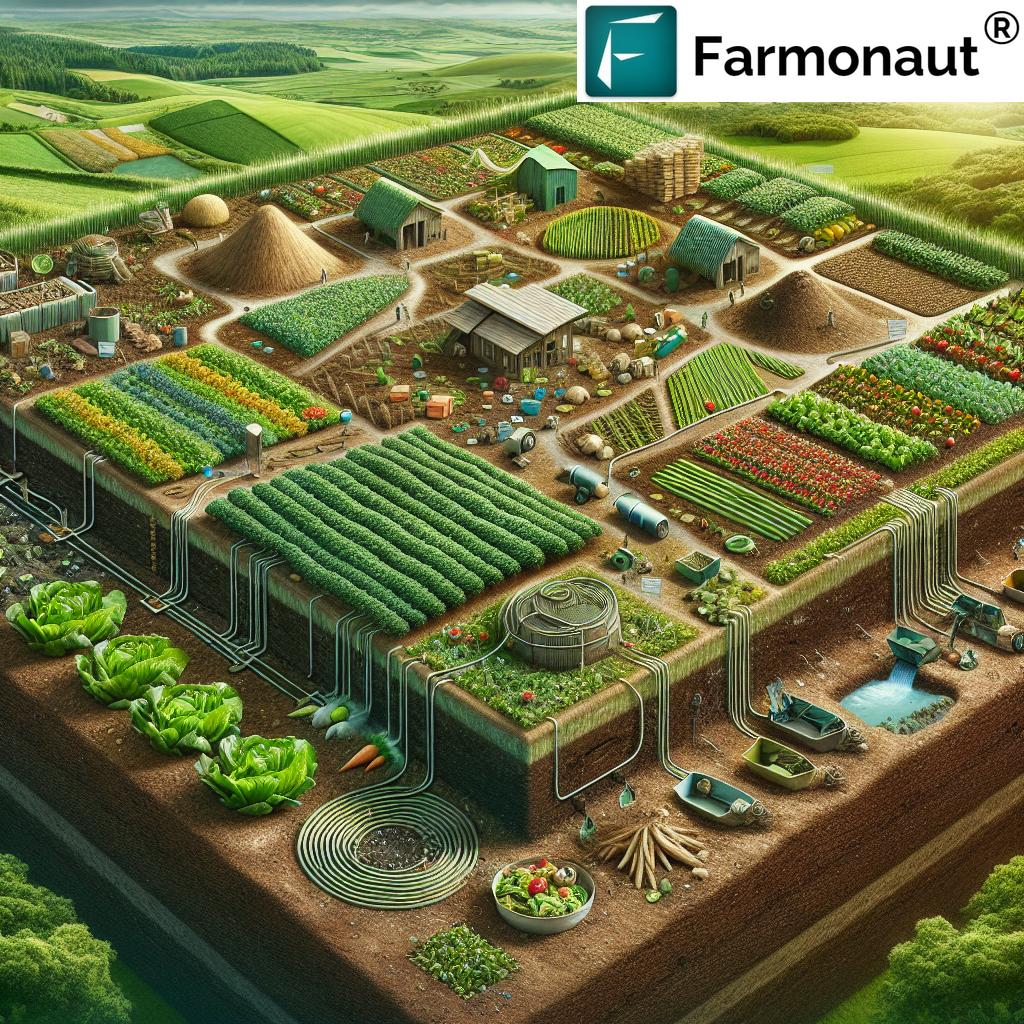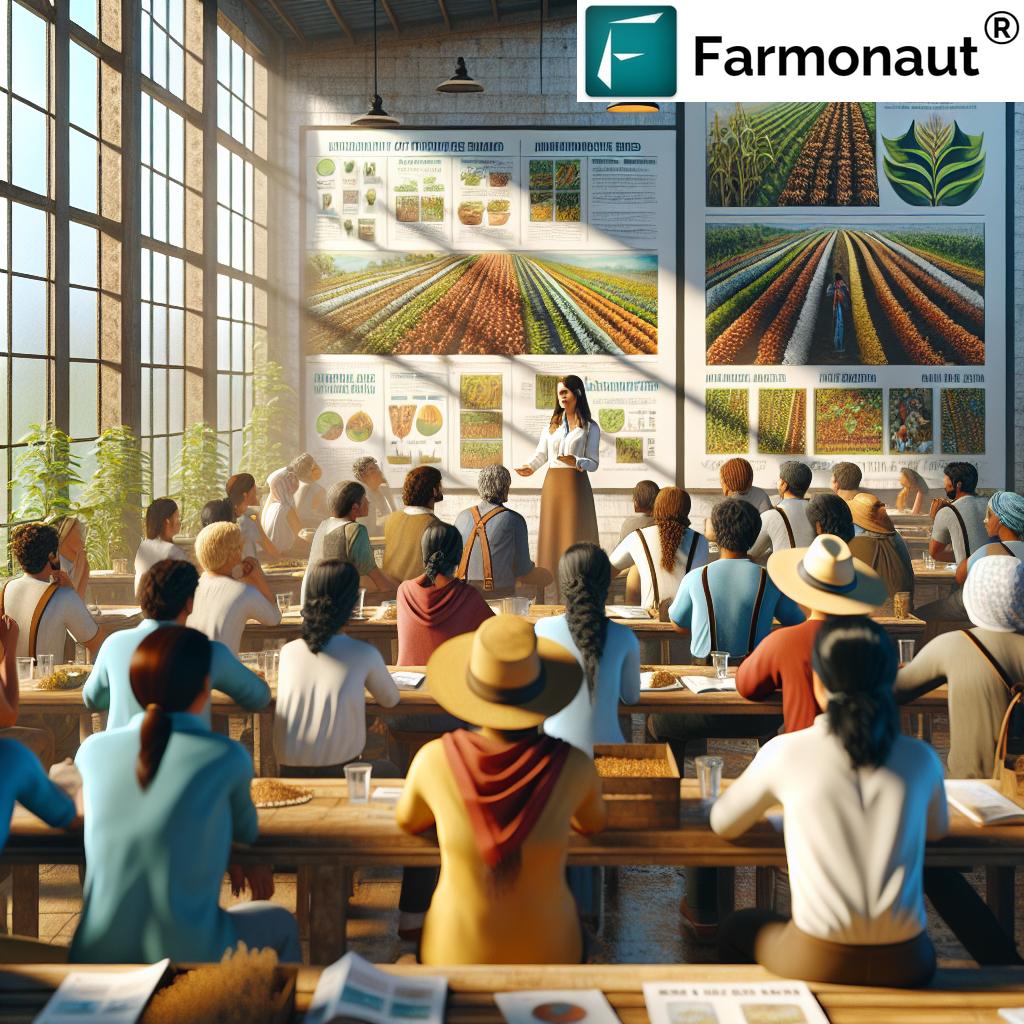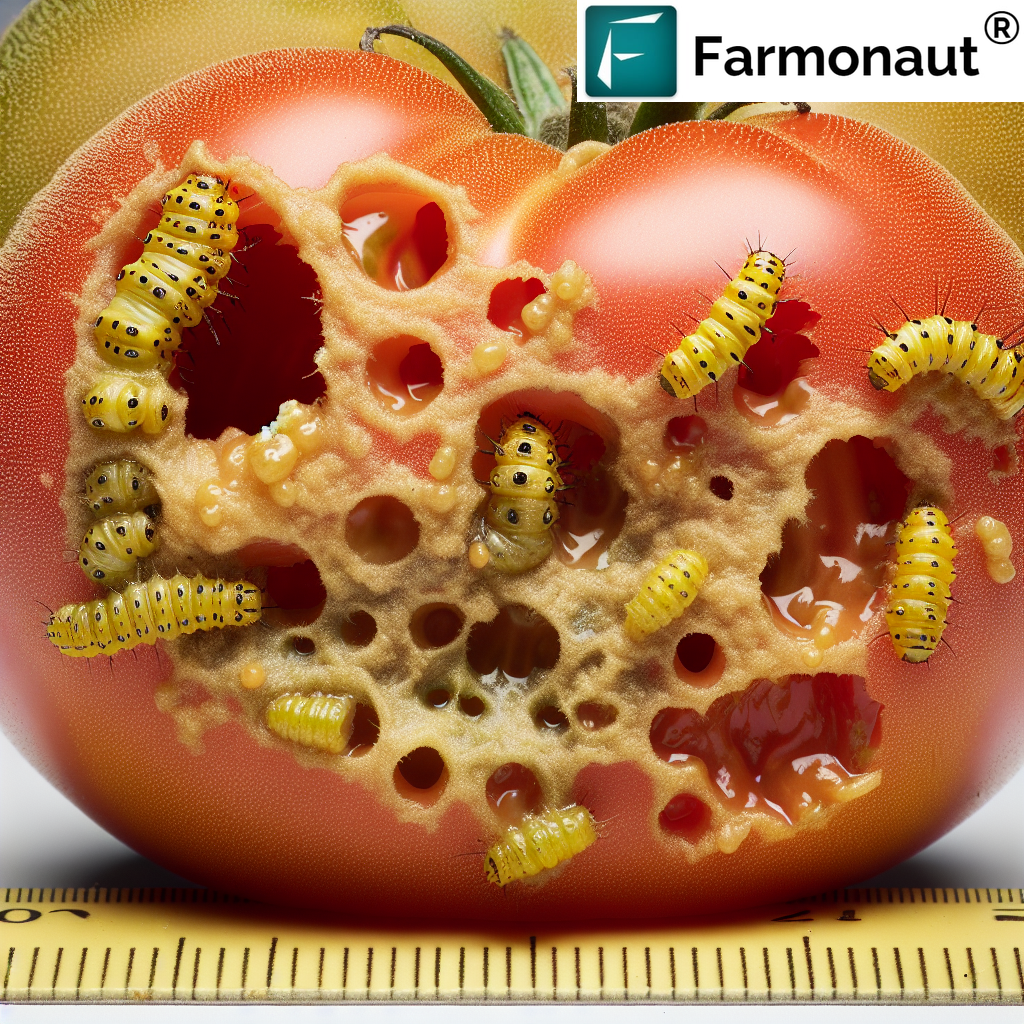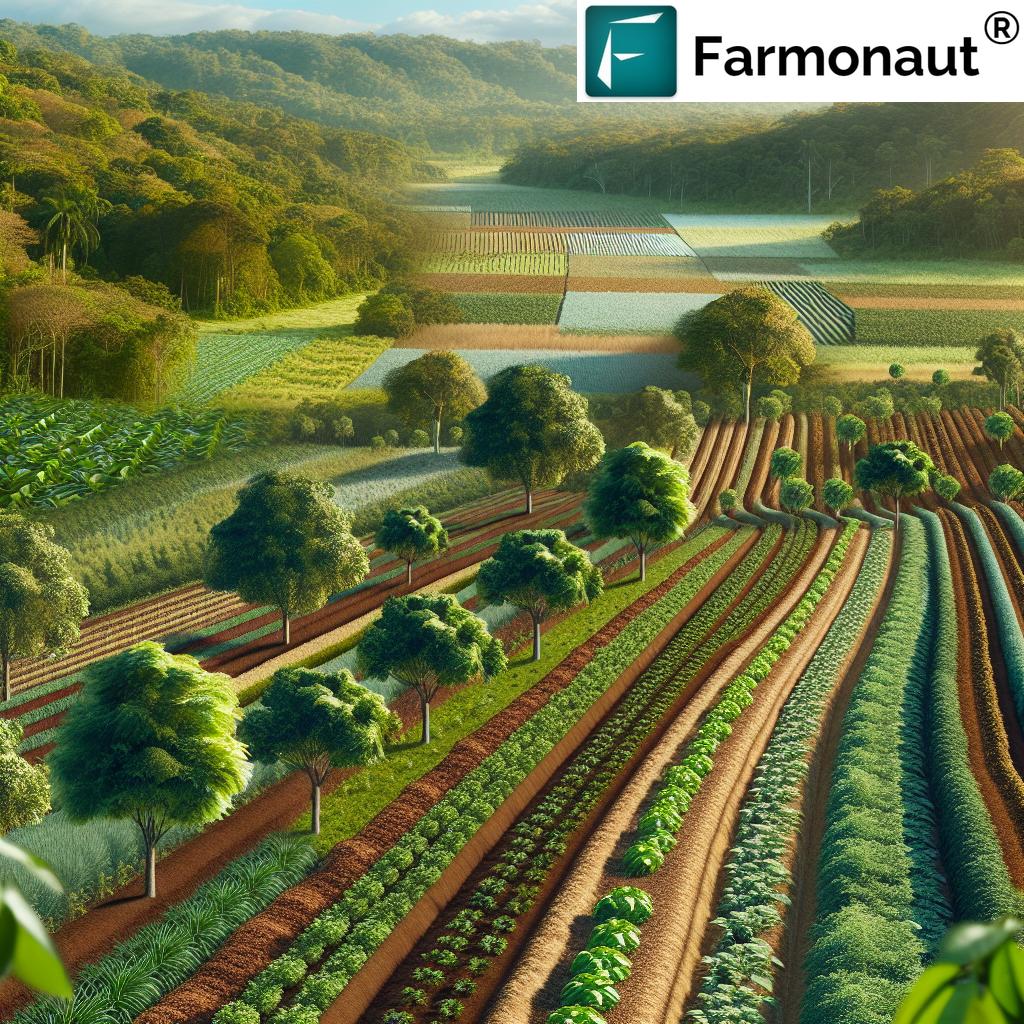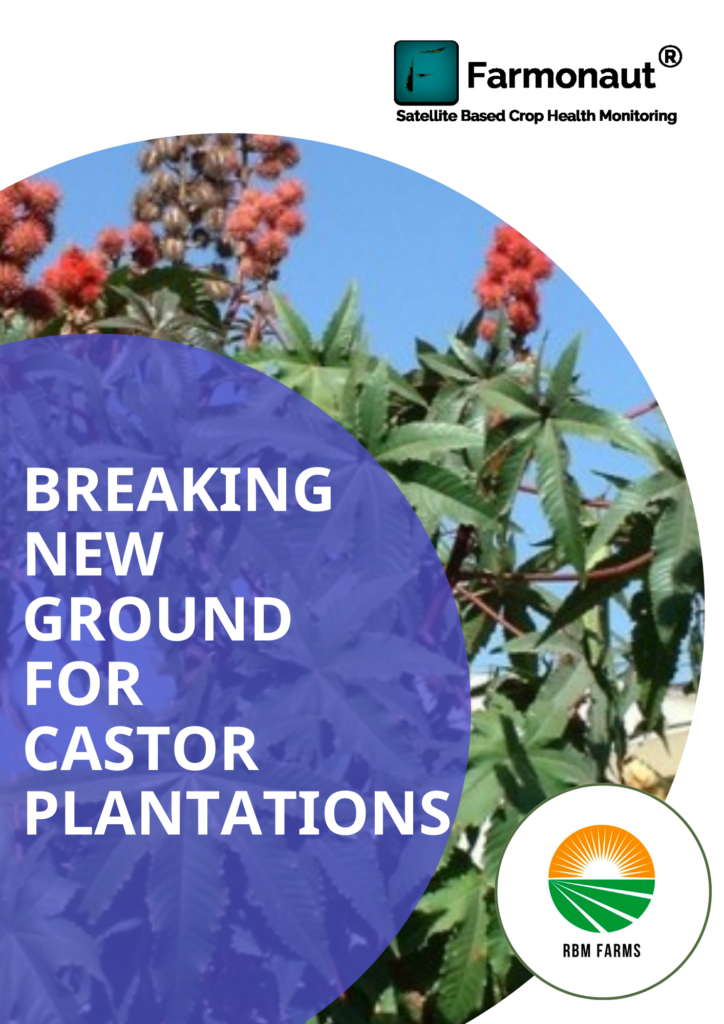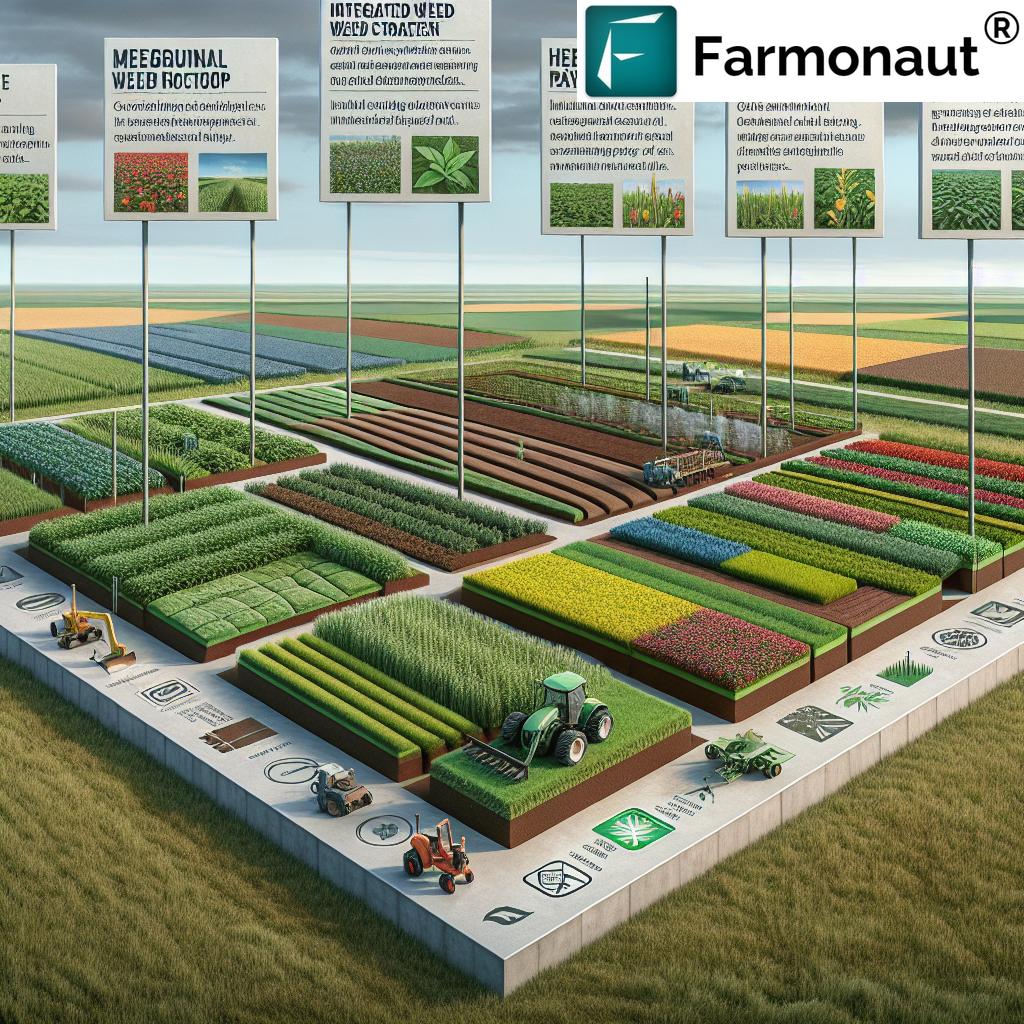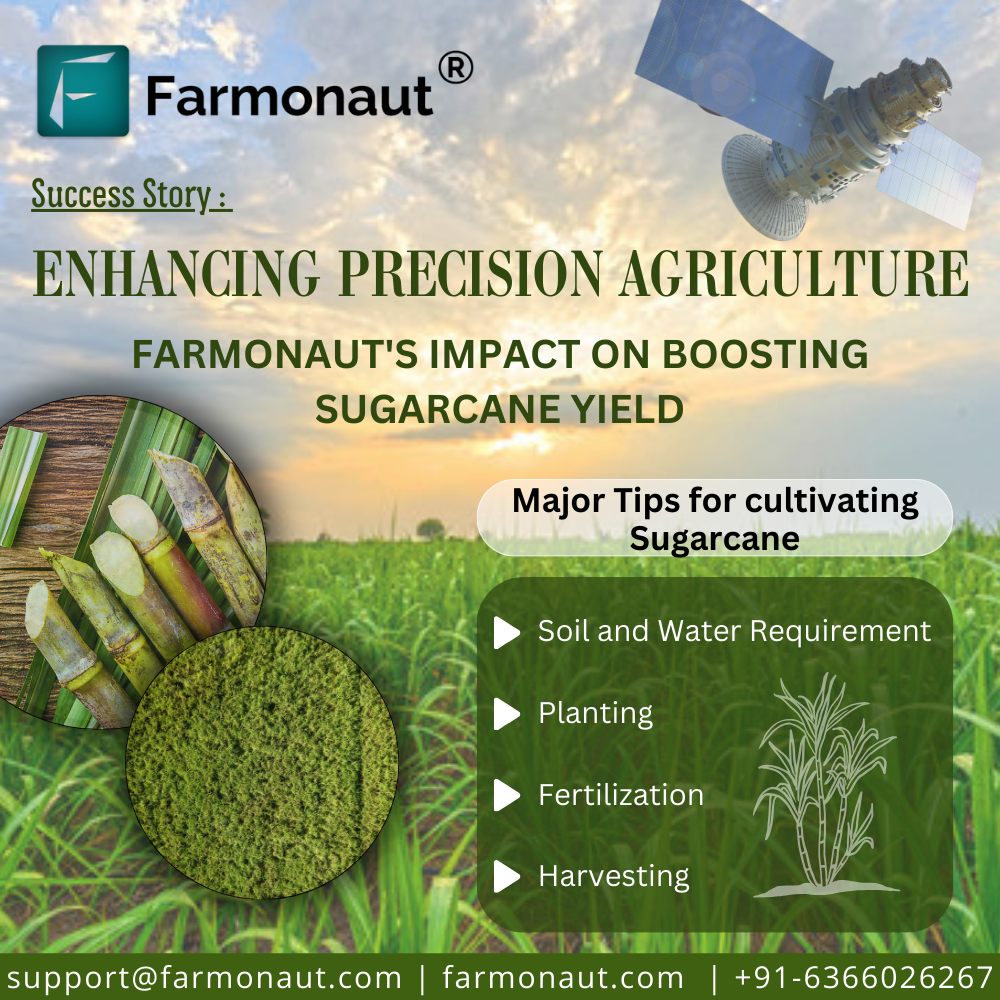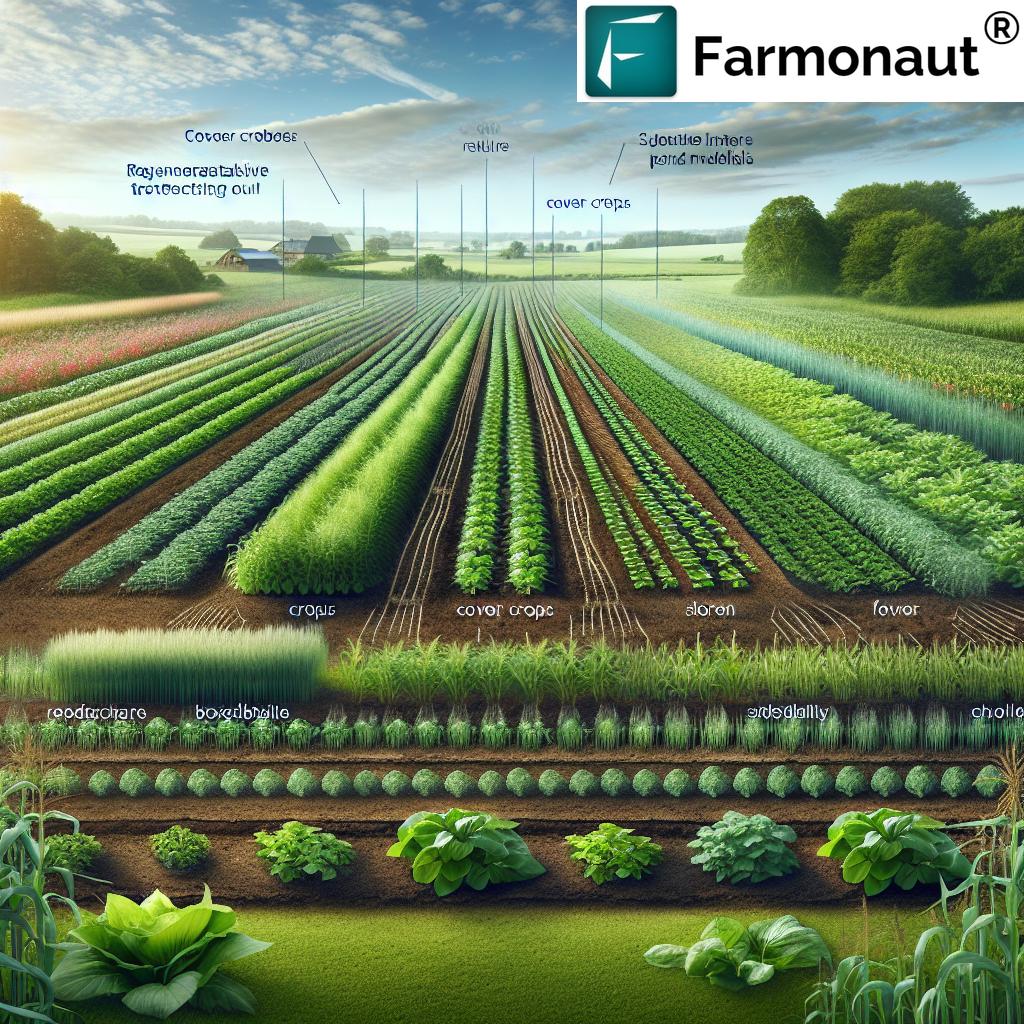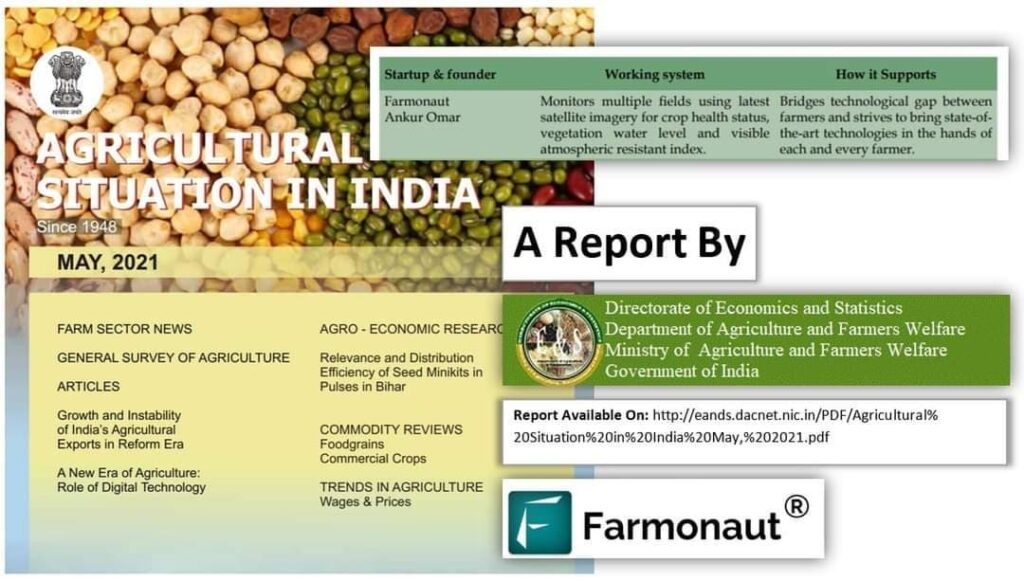- Introduction: What Is Agricultural Sustainability?
- Core Principles of Sustainable Agriculture
- 7 Surprising Farming Secrets for Sustainability
- Technologies Driving Sustainable Agricultural Practices
- Farmonaut: Revolutionizing Sustainable Agriculture
- Comparison Table of Sustainable Farming Practices
- Challenges to Sustainable Agriculture Adoption
- The Future of Sustainable Agriculture
- FAQs: Sustainable Agriculture & Farmonaut
- Conclusion
“Up to 60% of global soil is degraded, threatening future food security and sustainable agriculture.”
Agricultural Sustainability: 7 Surprising Farming Secrets
In today’s fast-evolving world, the importance of agricultural sustainability cannot be overstated. As environmental challenges mount and natural resources dwindle, our ability to produce food and agricultural products without undermining the needs of future generations is critical. At the heart of this effort are sustainable agriculture practices that foster soil health management, water conservation in agriculture, and the preservation of biodiversity, all while allowing farmers to maintain their livelihoods and promote social equity in rural communities.
The journey towards sustainability in farming is not linear. It requires a holistic approach—embracing innovative technologies, science-backed techniques, and a strong commitment to environmental stewardship in farming. By incorporating conservation agriculture practices, integrated pest management, and precision agriculture technologies, we can boost agricultural yields, reduce resource wastage, and secure a healthy, sustainable future for us all.
Core Principles of Sustainable Agriculture
To achieve real and long-lasting sustainable agricultural practices, our systems must be rooted in three foundational pillars:
-
Environmental Stewardship:
Preserving and protecting our natural resources is fundamental.
This includes minimizing chemical pollution, conserving water, preventing soil erosion, and preserving biodiversity. -
Economic Viability:
Farming practices must remain profitable so that farmers can support their livelihoods and invest in sustainable agricultural advancements, allowing us to maintain productivity year after year. -
Social Responsibility:
We must prioritize fair labor practices, empower rural communities, and ensure equitable access to healthy food, creating a strong social fabric that supports sustainability.
By balancing these elements—environmental stewardship, economic profitability, and social equity—we pave the way for a sustainable agricultural future that values both productivity and the planet.
7 Surprising Farming Secrets to Achieve Agricultural Sustainability
“Sustainable farming can reduce water usage by up to 50% compared to conventional methods.”
Unlocking the secrets to lasting agricultural sustainability means using strategic methods and technologies that maximize yields, conserve resources, and protect ecosystems. Let’s dive into the seven most impactful, yet surprising, secrets that separate truly sustainable farms from conventional operations:
1. Embracing Conservation Agriculture Practices
- One of the bedrocks of sustainable agriculture, conservation agriculture practices focus on minimal soil disturbance, permanent organic soil cover, and crop diversity. Techniques such as no-till farming and cover cropping help in rotating crops, which boosts soil health management and minimizes erosion.
- By limiting soil disruption, we enhance soil structure, retain soil moisture, and reduce the losses of carbon and organic matter, increasing agricultural yields sustainably.
- Example: No-till farming using residues of previous crops as mulch keeps the soil protected, cool, and biologically active, leading to improved water retention.
2. Harnessing the Power of Agroecology and Biodiversity
- Integrating agroecology principles into our fields means leveraging nature’s own processes to create a thriving farm ecosystem. Practices like polyculture (growing different crops together) and agroforestry (incorporating trees into cropping systems) promote biodiversity and enhance environmental resilience.
- With increased plant diversity, we decrease vulnerability to pests and diseases and boost soil fertility by cycling nutrients more efficiently, naturally reducing the need for synthetic chemical fertilizers.
- Example: Planting legumes alongside cereal crops for natural nitrogen fixation and improved yields.
3. Mastering Water Conservation in Agriculture
- Water is one of our most precious resources. Transitioning to drip irrigation, implementing rainwater harvesting, and using mulching can conserve up to 50% more water than conventional irrigation.
- With increasing pressure on freshwater supplies, adopting efficient methods ensures our crops remain resilient during droughts while also lowering water costs.
- Example: Drip irrigation systems enable targeted water delivery to a plant’s root zone, minimizing wastage and evaporation.
4. Prioritizing Soil Health Management
- Soil health management is the foundation of productive and sustainable farming. Practices such as crop rotation, composting, and reduced tillage boost soil fertility, help suppress pests, and improve soil biodiversity.
- Healthy soil structure facilitates better water infiltration, nutrient cycling, and supports healthy plant growth—all cornerstones of increased yields and long-term sustainability.
5. Leveraging Integrated Pest Management (IPM)
- IPM combines biological, cultural, physical, and, when necessary, targeted chemical tools to manage pests in an economically and ecologically sound manner.
- This holistic approach greatly reduces our reliance on broad-spectrum pesticides, thus preserving beneficial insects, reducing input costs, and protecting our environment.
- Example: Introducing predator insects, using physical barriers, and rotating crops for natural pest suppression.
6. Adopting Organic Farming Techniques
- Organic farming techniques eschew synthetic chemicals, focusing instead on organic fertilizers like compost, green manure, and biological pest control.
- These techniques enhance on-farm biodiversity, promote healthy soil, and yield products that meet growing consumer demand for sustainable and healthy food.
7. Utilizing Precision Agriculture Technologies
- Cutting-edge precision agriculture technologies use satellite imagery, AI, data analytics, and GPS mapping to optimize every aspect of resource and crop management.
- These systems deliver real-time insights, enabling targeted irrigation, tailored nutrient application, and early identification of pest or disease outbreaks—boosting yields, reducing waste, and supporting conservation.
- Example: Satellite-based platforms like Farmonaut empower farmers with actionable data on crop health, soil moisture, and field variability, making data-driven decisions accessible and affordable.
Technologies Driving Sustainable Agricultural Practices
Sustainable agriculture has entered a new era with the adoption of advanced technologies designed to maximize resource efficiency and profitability while protecting our natural environment. Here’s how innovation is shaping tomorrow’s farms:
1. Satellite-Based Crop Health Monitoring
- Modern platforms leverage multispectral satellite imagery to provide detailed insights into crop health management, assessing vegetation indices, soil moisture, and field anomalies.
- This empowers farmers to act swiftly on emerging issues, optimize irrigation, and allocate fertilizers precisely where needed, reducing unnecessary inputs and waste.
2. Artificial Intelligence and Farm Advisory
- AI-driven advisory tools analyze weather data, soil metrics, and satellite imagery to deliver tailored recommendations and predictive insights for managing crops more effectively.
3. Blockchain-Based Supply Chain Traceability
- Blockchain technology secures every stage of the agricultural product’s journey from farm to consumer. This traceability enhances transparency, reduces fraud, and ensures consumers receive authentic, sustainably-produced food.
- Explore Farmonaut’s blockchain-based product traceability—an invaluable tool that strengthens supply chain transparency. Learn more about Farmonaut Product Traceability →
4. Fleet and Resource Management for Agribusiness
- Fleet management tools optimize the use of agricultural vehicles and machinery, helping businesses track operations, ensure safety, cut down time, and lower fuel consumption.
-
Discover how Farmonaut empowers agribusinesses with smart fleet management solutions to streamline logistics and reduce costs:
Farmonaut Fleet Management →
5. Carbon Footprinting and Resource Efficiency
- Real-time carbon footprint tracking allows for monitoring and reducing greenhouse emissions across all farming activities, supporting environmental stewardship and regulatory compliance.
-
Take a step toward climate-friendly farming:
Farmonaut Carbon Footprinting →
6. Low-Cost Access with Farmonaut’s Subscription Model
- Farmonaut offers affordable, scalable, and data-driven solutions via subscription. Unique pricing makes precision agriculture accessible for farms of any size—no expensive hardware required.
- To get started, access Farmonaut’s web and mobile apps or check out the API (and detailed Developer Docs).
Farmonaut: Revolutionizing Sustainable Agriculture
As a leader in satellite-powered farm management, Farmonaut bridges the gap between traditional farming and next-generation sustainable agriculture practices. Our platform is designed for individual farmers, agribusinesses, rural communities, government institutions, and corporations involved in food and textile supply chains.
- Real-Time Satellite Imagery: Monitor crop health, forecast weather challenges, and identify early pest or disease risks.
- Jeevn AI Farm Advisory: Receive tailored advice for pest management, irrigation scheduling, and nutrient allocation using AI-powered analysis.
- Extensive Traceability: Blockchain-enabled tracking boosts transparency for every agricultural product, supporting consumer confidence and regulatory compliance.
- Carbon Tracking: Track, analyze, and reduce your farm’s carbon emissions with actionable insights.
- Affordable for All: Accessible across Android, iOS, browser, and API—farm management in everyone’s pocket, affordable and scalable for farms of every size.
We give you the tools to grow more sustainably, manage your resources wisely, and build confidence in your agricultural products.
Accessing financing and crop insurance has never been easier. Our Crop Loan and Insurance Verification helps validate your operations through satellite data—speeding up approvals and reducing fraud.
Check how Farmonaut can help your farm access fair financing →
Comparison Table of Sustainable Farming Practices
| Practice | Brief Description | Estimated Yield Improvement (%) | Water Savings (%) | Soil Health Impact | Biodiversity Benefit |
|---|---|---|---|---|---|
| Crop Rotation | Alternating crops each season to improve soil health and reduce pest buildup. | 8-15% | 5-10% | Significant improvement in nutrient cycling | Moderate-to-high (encourages variety) |
| Cover Cropping | Growing plants during off-seasons for soil protection and enrichment. | 6-12% | 10-15% | Reduces erosion, increases organic matter | High (supports pollinators and soil fauna) |
| Precision Irrigation (Drip) | Direct, minimal water delivery systems to plant roots. | 10-20% | Up to 50% | Prevents waterlogging and salinization | Neutral |
| Organic Fertilization | Applying compost, manure, or other organic matter instead of synthetics. | 7-13% | 2-5% | Rich in microbial life; builds soil | High (encourages diverse soil biota) |
| Integrated Pest Management | Combining physical, biological, and targeted chemical tools for pest control. | 5-10% | 3-8% | Reduces chemical load | High (reduces non-target impacts) |
| Agroforestry | Planting trees and crops together for mutual benefit. | 8-18% | 5-10% | Shields and improves microclimate | Very high (habitat for many species) |
| Conservation Tillage | Minimal soil disturbance to conserve structure, moisture. | 8-15% | 8-14% | Strong (improved structure, prevents erosion) | Moderate (favors beneficial organisms) |
Challenges to Sustainable Agriculture Adoption
Transitioning to a sustainable agriculture system holds immense promise but not without significant obstacles:
- Financial Barriers: Establishing new techniques, purchasing advanced equipment, and training for modern practices can require substantial investment that may be daunting for farmers, especially smallholders.
- Access to Knowledge & Education: A lack of targeted agricultural education and resources prevents many from adopting the best sustainable techniques.
- Market and Policy Barriers: Sustainable produce often competes with conventional goods, facing challenges in gaining fair prices and market access. Existing policies may also favor conventional practices over innovative or organic approaches.
- Risk Aversion: With farming being the primary livelihood for many rural communities, the perceived risks of switching to new methods may limit adoption.
The Future of Sustainable Agriculture: Innovation, Community, and Resilience
Looking ahead, agricultural sustainability will depend on effectively balancing innovation with time-tested stewardship of our land, water, and biodiversity. We envision a future where every field is digitally connected, every crop is data-guided, and every product can be traced transparently from farm to table.
- Policy: Supportive regulations and incentives for sustainable agricultural practices will enable wider adoption at scale.
- Technology: Continued improvement in precision agriculture technologies—from AI and remote sensing to blockchain traceability—will unlock new productivity levels for farmers.
- Community: Ongoing agricultural education, collective support for rural communities, and knowledge-sharing will ensure even the smallest farms can thrive sustainably.
With tools like Farmonaut, we’re already witnessing the future take shape—one that is profitable, resource-smart, and inherently resilient.
Get Started with Farmonaut: Affordable Sustainable Agriculture Subscriptions
We make access to satellite crop monitoring, AI advisory, carbon footprinting, and resource management simple and cost-effective:
Want to explore powerful satellite insights for plantations at any scale? Choose Farmonaut’s Large-Scale Farm Management tool:
Learn how to command your operations efficiently →
Frequently Asked Questions about Sustainable Agriculture and Farmonaut
Q1: What is agricultural sustainability in simple terms?
A: Agricultural sustainability means farming in ways that meet current food and resource needs without harming the planet or reducing options for future generations. This involves caring for the environment (soil, water, biodiversity), maintaining profitable farms, and ensuring fair treatment of people involved throughout the agricultural system.
Q2: Why is soil health management vital for sustainable agriculture?
A: Healthy soil is the bedrock of productive, resilient, and eco-friendly agriculture. Good soil health management improves fertility, helps crops withstand stress, enhances yields, and reduces the need for chemical inputs.
Q3: How does Farmonaut help with water conservation in agriculture?
A: Farmonaut’s platform uses satellite data to monitor field conditions and provides insights for efficient irrigation scheduling. This enables more precise water application, reducing waste and supporting sustainable water use.
Q4: Can I access Farmonaut’s services on my mobile?
A: Yes! Farmonaut’s services are available via Android (Google Play), iOS (App Store), and web browser for maximum flexibility.
Q5: What are the benefits of precision agriculture technologies in sustainability?
A: Precision technologies optimize every input—water, fertilizer, pesticides—nose-to-tail. This reduces costs, boosts yields, and lessens environmental impact, bringing us ever-closer to truly sustainable agriculture.
Q6: How does Farmonaut’s blockchain-based traceability work?
A: Every step from planting to sale is recorded transparently and securely. This helps prevent fraud, assures buyers of quality origin, and reinforces accountability throughout the food supply chain.
Q7: Can smallholder farmers afford Farmonaut’s technology?
A: Absolutely. By leveraging satellite imagery and offering flexible subscriptions, Farmonaut is democratizing access to cutting-edge sustainable farm management—even for the smallest farms.
Q8: Where can I learn more about sustainable agricultural practices?
A: The Farmonaut blog and help center (via web/app) offer the latest research, guides, and real-world examples to support your sustainability journey.
Conclusion: Secure Our Agricultural Future with Sustainable Farming
Agricultural sustainability is the promise that together, we can nourish the world today and tomorrow. It’s about balancing profit and stewardship, leveraging innovation while respecting tradition, and supporting rural communities with the best tools available. Through proven sustainable agricultural practices—conservation farming, agroecology, water management, soil health, integrated pest solutions, and modern technologies like Farmonaut—we hold the solutions to a bountiful, resilient, and equitable future.
Let’s adopt the secrets of sustainable farming, protect our resources, and lead the charge in preserving the biodiversity and natural systems so vital to agriculture. For every farmer, agribusiness, and community, the next step toward a sustainable world starts in our fields—powered by knowledge, connection, and technology for all.






